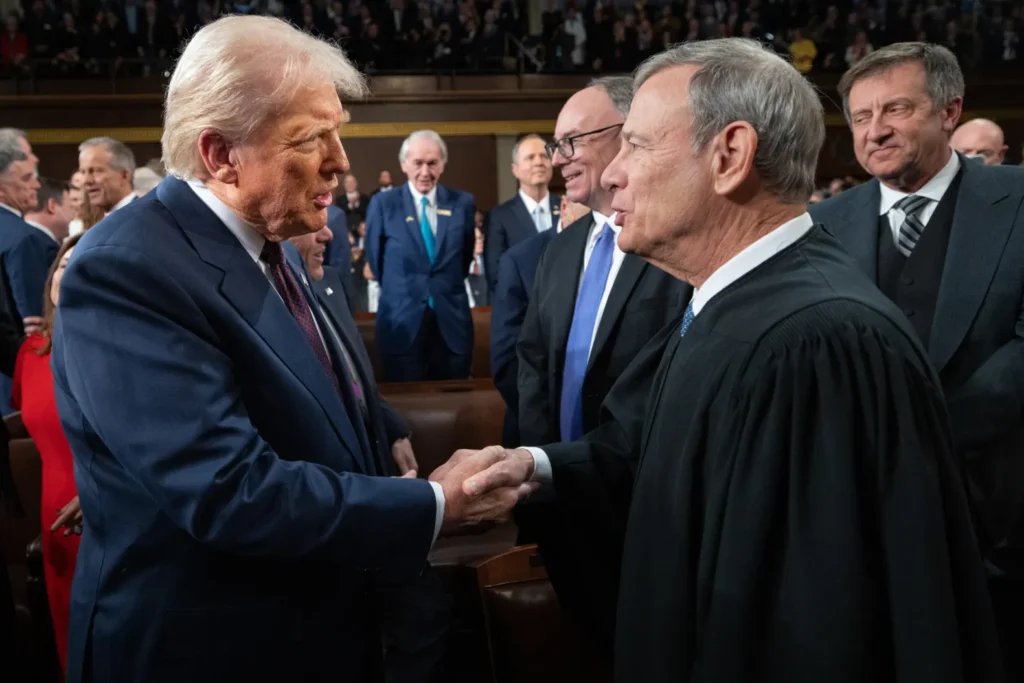A significant rift has emerged between the U.S. judiciary and former President Donald Trump, marked by Chief Justice John Roberts’ public rebuke. The clash has intensified debates about judicial independence, the separation of powers, and the role of the courts in checking executive authority.
Background: The Roots of the Conflict
Tensions between Trump and the judiciary date back to his tenure in the White House, particularly during disputes over immigration policies, executive orders, and the investigation into alleged election interference. Trump’s criticism of judges who ruled against his policies set the stage for an escalating showdown.
The former president’s approach to challenging judicial decisions was unprecedented in its intensity and frequency. Trump’s frequent labeling of court rulings as ‘political’ or ‘biased’ shifted the narrative around judicial authority and sparked a deeper discourse about the legitimacy of the courts.
Chief Justice Roberts’ Bold Statement
Chief Justice Roberts broke with tradition by openly countering Trump’s remarks against the judiciary. In response to Trump’s claims of bias against ‘Obama judges,’ Roberts asserted, “We do not have Obama judges or Trump judges, Bush judges or Clinton judges. What we have is an extraordinary group of dedicated judges doing their level best to do equal right to those appearing before them.”
This statement was a rare public commentary from a Chief Justice, signaling the judiciary’s concern about the perception of partisanship within the courts. Historically, U.S. Supreme Court Justices avoid political commentary, emphasizing their commitment to impartiality and the rule of law.
Implications for Judicial Independence
Roberts’ rebuke emphasizes the importance of judicial impartiality and the independence of the courts. It also highlights the risks of eroding public trust in the judiciary, as repeated attacks from a prominent political figure can undermine confidence in the legal system.
The judiciary’s independence is a cornerstone of American democracy, meant to act as a check on executive power. However, when judicial independence is questioned, it can lead to a perception that courts are politically motivated rather than guided by law.
Trump’s Response and Escalation

True to form, Trump responded with a series of tweets criticizing the judiciary, accusing them of bias and obstructing his agenda. He claimed that activist judges were undermining his efforts to secure the nation and protect its borders.
Trump’s rhetoric went beyond criticism, casting doubt on the motivations of individual judges and entire courts. These accusations fed into a broader narrative of mistrust, fueling skepticism about the legitimacy of court decisions.
The Broader Context: Judiciary vs. Executive
The clash between Trump and the judiciary reflects a broader debate about the boundaries of executive power. Legal experts argue that Trump’s attacks on the judiciary pose a threat to the delicate balance of power outlined in the U.S. Constitution.
Throughout his presidency, Trump often tested the limits of executive authority, leading to numerous legal challenges. His administration’s aggressive stance toward immigration policy, travel bans, and border security often faced judicial scrutiny, further intensifying tensions.
The Impact on the Rule of Law
Continued disputes between the executive and judicial branches could lead to long-term consequences for the rule of law in the United States. If public perception of the judiciary’s impartiality is compromised, the legitimacy of judicial decisions may be called into question.
A weakened judiciary could create a power vacuum, allowing for executive overreach. The principle of checks and balances, designed to prevent any one branch of government from becoming too powerful, relies heavily on public respect for the judiciary’s decisions.
Comparing Historical Contexts
Historically, clashes between the judiciary and executive branches are not new. However, the scope and public nature of the conflict during Trump’s tenure were unparalleled. Past presidents have faced adverse judicial rulings, but few have directly attacked the integrity of the judiciary as openly as Trump.
During the Watergate scandal, President Richard Nixon also had a contentious relationship with the courts. However, rather than publicly attacking the judiciary, he attempted to manipulate the system through appointments and legal maneuvering. The contrast between Nixon and Trump underscores the shift in political strategy in the modern era.
The Media’s Role in Amplifying the Divide
Media coverage amplified the conflict, with partisan outlets framing the judiciary either as a defender of constitutional principles or an obstructionist force. This polarization further contributed to the public’s divided perception of the courts.
Social media, particularly Trump’s active presence on Twitter, played a pivotal role in shaping public opinion. The immediacy and reach of social media allowed Trump to communicate his grievances directly to millions, bypassing traditional media gatekeepers.
Long-Term Consequences for the Judiciary
The lasting impact of Trump’s clashes with the judiciary remains uncertain. However, legal scholars warn that continued political attacks on judges could weaken the courts’ authority and lead to increased political interference in judicial appointments and rulings.
One potential outcome is a judiciary more wary of public opinion and political pressure, which could influence future rulings. If judges feel pressured to align their decisions with political trends, it could erode the fundamental principle of judicial neutrality.
Public Perception and Trust in the Judiciary
Public trust in the judiciary is crucial for a functioning democracy. According to recent polls, confidence in the U.S. Supreme Court has fluctuated in response to high-profile rulings and political controversies. Trump’s sustained criticism may have contributed to declining trust among certain voter demographics, while others view his stance as a necessary challenge to judicial overreach.
Conclusion: A Precedent-Setting Conflict
Chief Justice Roberts’ rebuke marks a rare moment of judicial defense in the face of executive criticism. As the divide deepens, the future of judicial independence and the balance of power remain critical issues for the nation’s democracy. The conflict raises broader questions about the role of the judiciary, the limits of executive power, and the evolving nature of political discourse in the digital age.
Federal Judge Blocks Trump’s Ban on Transgender Military Service
For more insights on the U.S. judiciary and political developments, visit USA Glory.






